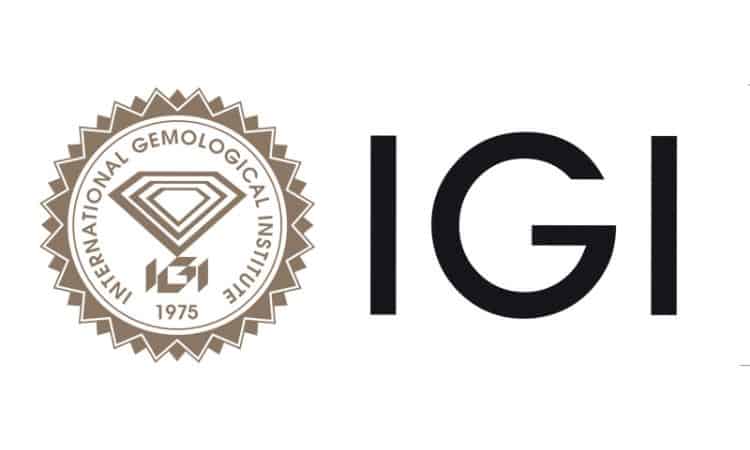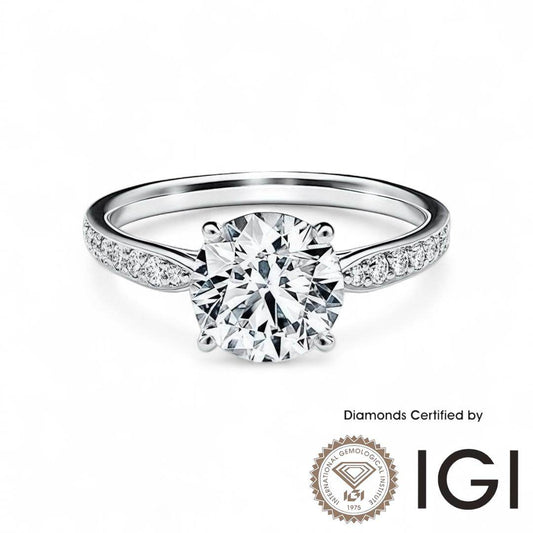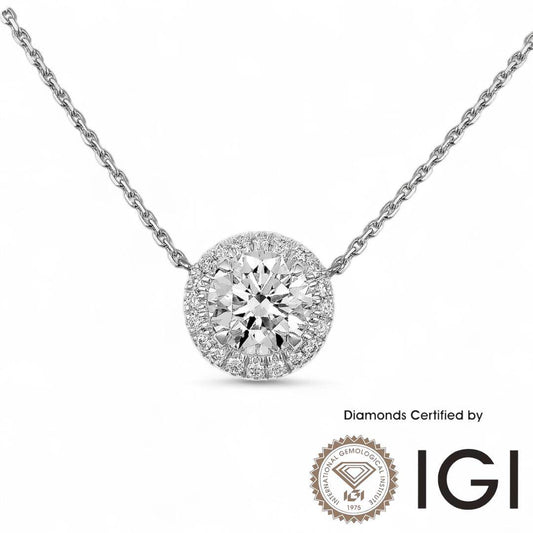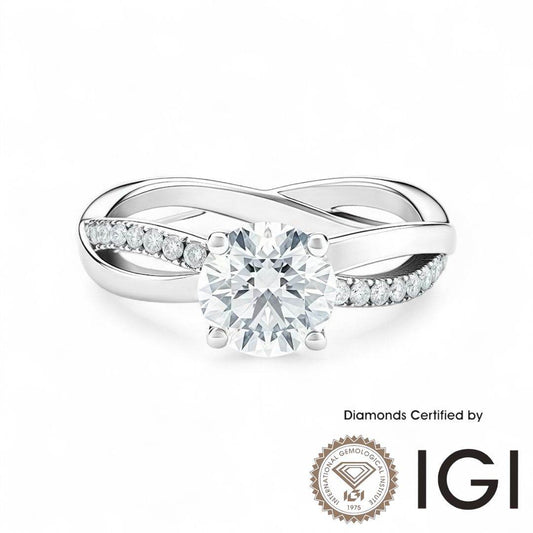India IGI vs Shanghai IGI — Myths, Facts, and How to Choose the Best Lab-Grown Diamond
Executive summary: The widely circulated claim that Shanghai IGI grades lab-grown diamonds more leniently than India IGI is exaggerated. Both IGI labs apply the same grading standards; minor one-grade discrepancies can occur due to the human factor. As a long-standing diamond distributor, our recommendation for buyers is to purchase only IGI- or GIA-certified lab-grown diamonds of D–E color and at least VVS2 clarity to protect long-term value. Avoid uncertified stones because post-treatment is difficult to detect without a reliable report.
Why this topic matters
Lab-grown diamonds have reshaped the jewelry market by offering ethically produced stones at significantly lower price points than mined diamonds. Certification—particularly from reputable laboratories such as the International Gemological Institute (IGI) and the Gemological Institute of America (GIA)—remains the industry standard for verifying a diamond's 4Cs and treatment history.
Common rumor: "Shanghai IGI is more lenient than India IGI"
Over the past two years, posts on social platforms such as Xiaohongshu (RED) and TikTok have repeatedly claimed that diamonds graded at IGI's Shanghai lab receive more favorable color and clarity grades than those graded at IGI India (Mumbai/Surat). Frequently quoted examples suggest that a stone labeled D in India will be labeled E in Shanghai, or vice versa, implying systemic leniency tied to geography.
How the rumor spreads
The rumor proliferates for several predictable reasons:
- Confirmation bias: Buyers who receive a slightly higher grade from one lab are more likely to post and share that experience.
- Reseller narratives: Some sellers amplify the message to market their inventory as "better graded".
- Translation noise: Terminology and nuance can be lost across languages, yielding misinterpretations.
What the IGI standard actually is
IGI is an international laboratory with multiple locations. Its published grading protocols are standardized and documented. In principle, an instrument measurement (carat weight, dimensions, fluorescence) should be identical regardless of lab location. The remaining variables—color and clarity—are evaluated by trained graders following the same guidelines.
IGI's official site and report verification page are useful resources for buyers. You can verify reports directly via IGI's portal: IGI Report Verification.
Professional assessment based on distribution experience
Over many years in distribution and wholesale, we submitted comparable stones to both India IGI and Shanghai IGI. Our findings:
- Identical grades occurred the majority of the time (approximately 90–95%).
- Minor one-grade shifts (for example D → E or VVS2 → VS1) occurred irregularly and in both directions.
- There was no consistent pattern showing systematic leniency from either lab.
These variances align with global industry experience: grading contains a small subjective element because human graders visually assess color and inclusions, particularly on borderline stones.
Why one-grade differences happen
Even with standard protocols and calibrated viewing conditions, several factors can cause graders to assign slightly different results:
- Lighting and viewing environment: Slight deviations in ambient conditions or instrument calibration can nudge a borderline grade.
- Human perception: Color and inclusion visibility depend on each grader's training and visual acuity.
- Stone orientation and mounting: How a stone is positioned during assessment can expose or conceal characteristics.
IGI vs GIA — an important context
GIA is widely regarded as the most conservative and consistent laboratory. Historically, IGI certificates—especially in the lab-grown segment—have displayed slightly more generous grading in some borderline cases. This is not a blanket deficiency; it is a relative positioning used by market participants when comparing two reports on the same stone.
Buyer guidance — how to purchase with confidence
Based on our analysis, we recommend these practical rules for buyers of IGI-certified lab-grown diamonds:
1. Prioritize color: choose D or E
Because IGI can, in rare cases, grade up to one grade differently from the most conservative benchmark (GIA), selecting D or E color ensures the stone will visually meet high expectations and retain strong resale value.
2. Prioritize clarity: target VVS2 or better
Clarity affects both visual performance and secondary market acceptance. A stone graded VVS2 by IGI may approximate VS1 under more stringent grading. For long-term assurance, choose VVS2 or better.
3. Always require a readable, minted report number
Verify the certificate using the lab's online tool. IGI provides a report verification page where you can confirm the certificate details and ensure the report has not been altered: Verify IGI Report.
4. Avoid uncertified stones
Uncertified lab diamonds are a risk. Post-growth treatments (for example, HPHT to improve color after CVD growth) may change a stone's appearance but also affect long-term stability and value. Reliable labs explicitly disclose treatments on their reports—if no report exists, you simply do not know.
5. Inspect the full report, not only the headline 4Cs
Look for notes on treatments, fluorescence, polish, symmetry, and plotting maps. These details influence how the stone performs visually and how it will be traded in the future.
Case studies and real samples
Below are anonymized summaries of representative comparisons we performed (note: these are illustrative, not exhaustive):
- Sample A: 1.00ct round, submitted to both labs. IGI India: D / VVS2 / 3EX. IGI Shanghai: D / VVS2 / 3EX. No difference.
- Sample B: 1.50ct oval, borderline color. IGI India: E / VS1 / 3EX. IGI Shanghai: D / VS1 / 3EX. One-grade color difference, opposite directions from the claimed rumor.
- Sample C: 0.75ct pear, clarity borderline. IGI India: VVS2 / good polish. IGI Shanghai: VS1 / good polish. One-grade clarity difference; both reports included identical treatment disclaimers.
These examples show that grading variability exists, but it does not consistently favor a single lab location.
Why certification disclosure matters for post-treatment
CVD and HPHT technologies deliver exceptional lab-grown diamonds, but some stones undergo post-growth treatment to improve color. When treatments occur, reputable laboratories disclose them clearly on the report. A certificate from IGI or GIA will state whether a stone has been treated—this transparency directly affects long-term performance and value.
If a seller cannot produce a verifiable report or refuses to disclose treatment history, treat the stone as higher risk and avoid purchase until documentation is provided.
How to verify an IGI report
1. Ask the seller for the full IGI report number (not just a photo).
2. Visit IGI's verification portal: https://www.igi.org/reports/verify-your-report.
3. Match the report data (4Cs, measurements, plotting) against the stone you receive.
Practical checklist for buyers (quick reference)
- Only buy IGI or GIA certified stones.
- Prefer D–E color; avoid lower color grades when purchasing IGI-only stones.
- Prefer VVS2 clarity or better.
- Verify the certificate online before payment.
- Ask for treatment disclosure and plotted diagrams.
Addressing frequently asked objections
“But I saw many buyers praise Shanghai IGI on social media.”
Social media amplifies both positive and negative anecdotes. The reality is small-sample experiences do not equate to systemic bias. Our dataset across hundreds of stones shows parity between labs.
“Is a one-grade difference a big deal?”
It can be. One color grade may materially affect resale value and perceived rarity—particularly with larger, high-carat stones. That is why buying higher starting grades (D–E, VVS2+) reduces the risk.
“Should I insist on GIA instead?”
GIA is the gold standard for natural diamonds and offers highly consistent grading. For lab-grown diamonds, IGI is well-established and widely accepted. GIA also now grades lab-grown diamonds and is an excellent alternative if you prefer the most conservative benchmark. The trade-off is cost and, in some cases, longer turnaround times.
Summary and final recommendation
After investigating rumors and comparing certificates from both IGI India and IGI Shanghai, our conclusion is clear: the rumor that Shanghai IGI is consistently more lenient than India IGI is overstated. Both labs operate under IGI's standardized procedures, and small differences observed in practice are attributable to the human grading element rather than geographic bias.
For customers, the practical approach is conservative: purchase only IGI- or GIA-certified lab-grown diamonds in D–E color and VVS2 clarity or better. Insist on verifiable, unaltered reports and avoid stones without certification. This policy protects visual quality, resale value, and future liquidity.





